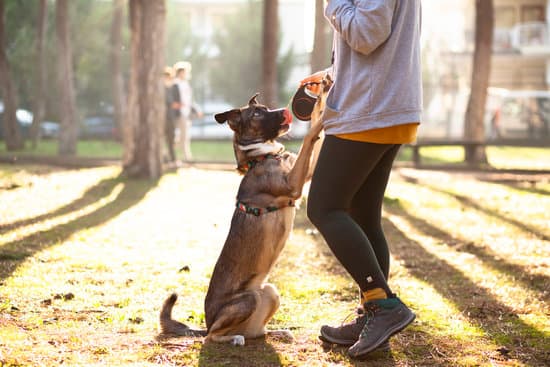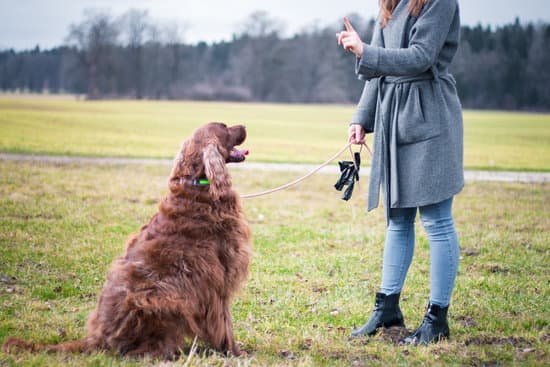Are you wondering how to train dogs out of separation anxiety? Separation anxiety is a common issue that many dog owners face, but with the right techniques and patience, it can be successfully addressed. In this article, we will explore the signs and symptoms of separation anxiety in dogs, as well as effective training methods to help your furry friend feel more at ease when they are left alone.
Understanding separation anxiety in dogs is crucial in addressing this behavior. Dogs are social animals and can experience distress when separated from their human companions. It’s important to recognize the signs of separation anxiety and create a safe and comfortable environment for your dog to help them feel more secure when alone. By understanding the root cause of this behavior, you can implement effective training methods to help your dog overcome their anxiety.
Creating a safe and comfortable environment for your dog is essential in addressing separation anxiety. This includes providing them with a designated area where they feel secure, as well as using gradual desensitization techniques and positive reinforcement training methods to help them adjust to being alone. By establishing a consistent routine and seeking professional help if needed, you can make significant progress in training your dog out of separation anxiety.
Signs and Symptoms of Separation Anxiety in Dogs
Separation anxiety in dogs can manifest in various signs and symptoms, often leading to destructive behavior and extreme distress for the dog. Being able to recognize these signs and symptoms is crucial in addressing the issue and implementing effective training methods to alleviate the anxiety. Here are some common signs and symptoms of separation anxiety in dogs:
- Excessive barking or howling when left alone
- Destructive behavior, such as chewing on furniture or belongings
- Attempts to escape confinement, such as scratching at doors or windows
- Pacing, restlessness, or inability to settle down when separated from the owner
- Toileting inside the house despite being house-trained
Recognizing these signs early on can help pet owners address separation anxiety before it escalates into a more severe issue. Once you have identified that your dog is suffering from separation anxiety, it’s important to take proactive steps to help them feel more comfortable and secure when left alone.
Creating a Safe and Comfortable Environment for Your Dog
It’s essential to provide your dog with a safe and comfortable environment when you’re away. This includes creating a designated space for them with their bed, toys, and other familiar items. Additionally, leaving an article of clothing with your scent can also provide comfort for your dog while you are gone.
When dealing with separation anxiety in dogs, it’s important to remember that addressing this issue requires patience and understanding. By implementing gradual desensitization techniques, positive reinforcement training methods, and establishing a consistent routine for your dog, you can help them overcome their separation anxiety over time. If necessary, seeking professional help from a trainer or behaviorist who specializes in separation anxiety can also provide valuable guidance in effectively training your dog out of this condition.
Creating a Safe and Comfortable Environment for Your Dog
When dealing with separation anxiety in dogs, it is crucial to create a safe and comfortable environment for your four-legged friend. Here are some tips on how to make your home a secure place for your pup:
1. Provide a designated space: Designate a specific area in your home where your dog feels secure and comfortable. This could be a cozy corner with their bed, toys, and blankets. Having a designated space can help alleviate anxiety when you are not around.
2. Keep them entertained: Leaving interactive toys, puzzle feeders, or long-lasting treats can help keep your dog occupied and mentally stimulated while you are away. This can distract them from feeling anxious and provide mental enrichment during your absence.
3. Consider calming aids: There are various calming aids available in the market such as pheromone diffusers, calming collars, or anxiety wraps that can help reduce stress and anxiety in dogs. Consult with your veterinarian to see if any of these options would be beneficial for your furry companion.
Ensuring that your dog’s environment is safe, stimulating, and comforting is an essential step in addressing separation anxiety. By creating a secure space filled with enjoyable distractions, you can help ease their distress when left alone.
Despite all these efforts at establishing a comfortable environment, some dogs may still struggle with separation anxiety. In such cases, seeking professional help from a trainer or behaviorist can provide additional support and guidance on how to train dogs out of separation anxiety effectively.
Gradual Desensitization Techniques
When dealing with a dog’s separation anxiety, it’s important to understand the underlying causes and how it manifests in their behavior. Separation anxiety in dogs occurs when they become extremely distressed when separated from their owners or family members. This can lead to destructive behavior, excessive barking, and other negative symptoms. Understanding how separation anxiety affects your dog is crucial in addressing and overcoming this issue.
One effective technique for helping dogs overcome separation anxiety is gradual desensitization. This involves slowly exposing your dog to being alone for short periods of time and gradually increasing the duration as they become more comfortable with the idea.
For example, start by leaving your dog alone for just a few minutes and then gradually increase the time apart. This helps them learn that being alone does not always result in negative outcomes and can help reduce their anxiety over time.
In addition to gradual desensitization, using positive reinforcement techniques can also be beneficial in training dogs out of separation anxiety. Rewarding your dog for calm and relaxed behavior when left alone can help them associate being alone with positive experiences. By consistently rewarding good behavior, you can help your dog build confidence and security when you’re not around.
Seeking professional help from a trainer or behaviorist who specializes in separation anxiety can also provide valuable insight and support in addressing this issue. These experts can offer personalized guidance based on your dog’s specific needs, as well as provide additional resources and techniques for effectively training your dog out of separation anxiety.
With patience, persistence, and the use of these gradual desensitization techniques, you can help your furry friend overcome their separation anxiety and have a happier, healthier relationship with them.
Positive Reinforcement Training Methods
Separation anxiety in dogs can be a challenging behavior to address, but positive reinforcement training methods can be effective in helping your furry friend overcome this issue. By using positive reinforcement, you can encourage and reward your dog for calm, independent behavior when left alone. This section will explore different positive reinforcement techniques that you can use to train your dog out of separation anxiety.
Utilizing Clicker Training
Clicker training is a popular method of positive reinforcement that can be used to teach your dog new behaviors and reduce their anxiety when left alone. This technique involves using a clicker-a small device that makes a clicking sound-to mark the exact moment your dog exhibits the desired behavior.
For example, if your dog remains calm when you leave the house, you would click the clicker and then immediately reward them with a treat or verbal praise. Over time, your dog will associate the click with a reward and learn to display calmer behavior during your absences.
Using Treats and Verbal Praise
Another effective way to reinforce positive behavior in dogs with separation anxiety is through the use of treats and verbal praise. Whenever your dog displays calm behavior while alone, give them a high-value treat or offer enthusiastic verbal praise.
By consistently rewarding these moments of independence, your dog will begin to associate being alone with positive experiences. It’s important to remain consistent with this method and only provide treats or praise when your dog is displaying calm, relaxed behavior.
Implementing Desensitization Techniques
In addition to using treats and verbal praise, desensitization techniques can also be incorporated into positive reinforcement training for separation anxiety in dogs. Gradual exposure to being alone for short periods of time-starting with just a few minutes and gradually increasing the duration-can help acclimate your dog to being by themselves. Whenever they successfully remain calm during these short periods, be sure to reward them with treats or praise as a form of positive reinforcement.
By utilizing these positive reinforcement training methods, you can help alleviate your dog’s separation anxiety and build their confidence in being left alone. Remember that patience and persistence are crucial when implementing these techniques, but with consistent effort, you can make significant progress in helping your furry companion feel more comfortable when separated from you.
Using Interactive Toys and Treats to Keep Your Dog Occupied
One effective way to help train dogs out of separation anxiety is by using interactive toys and treats to keep your dog occupied. This can provide mental stimulation and distract your dog from feeling anxious or stressed when you are not around. Here are some sub-sections on how to effectively use interactive toys and treats for this purpose.
Choosing the Right Interactive Toys
When choosing interactive toys for your dog, consider their size, breed, and chewing habits. Look for toys that are durable and safe for your dog to play with unsupervised. Interactive toys such as puzzle feeders, treat dispensing balls, or chew toys can help keep your dog mentally engaged and focused on something other than your absence.
Using Treats for Positive Reinforcement
Treats can be a powerful tool in training dogs out of separation anxiety. Use high-value treats such as small pieces of chicken, cheese, or commercially available dog treats. When leaving your dog alone, give them a special treat that they only receive during these times. This can create positive associations with being alone and help reduce their anxiety over time.
Rotating and Introducing New Toys
To prevent boredom, rotate your dog’s interactive toys regularly. Introduce new toys periodically to keep them engaged and prevent them from becoming too dependent on a single toy. This can also help alleviate anxiety by providing variety and novelty in their environment.
By incorporating these strategies into your training plan, you can help alleviate your dog’s separation anxiety while also providing them with mental stimulation and enrichment during periods of alone time.
Establishing a Consistent Routine for Your Dog
One way to create a consistent routine for your dog is by establishing set times for meals, walks, and playtime. By feeding your dog at the same times each day and taking them for regular walks and exercise, you can help regulate their biological clock and make them feel more secure in their daily routine.
In addition to meal times and exercise, it’s also important to establish a consistent bedtime routine for your dog. Creating a calming bedtime ritual can help signal to your dog that it’s time to relax and wind down for the night. This can include activities such as a quiet walk before bed, cuddle time, or even some calming music or white noise to help ease any anxiety they may be feeling.
Finally, when leaving the house, try to keep your comings and goings as low-key as possible. A consistent departure routine can help lessen the stress of leaving for your dog. Simple actions such as grabbing your keys or putting on your shoes should not be associated with leaving – these actions should be done at various times of the day without actually departing.
| Activity | Frequency |
|---|---|
| Feeding | Twice daily (morning and evening) |
| Exercise/Walks | Daily (morning and evening) |
| Bedtime Routine | Nightly (consistent calming rituals) |
Seeking Professional Help From a Trainer or Behaviorist
If your dog is suffering from severe separation anxiety, seeking professional help may be the best option for both you and your pet. Professional trainers and behaviorists are experienced in dealing with different types of behavioral issues in dogs, including separation anxiety. They can provide personalized training plans and strategies to help your dog overcome their anxiety and improve their overall well-being.
When seeking professional help, it’s important to choose a trainer or behaviorist who has experience specifically in addressing separation anxiety in dogs. Look for someone who uses positive reinforcement techniques and has a good understanding of canine behavior. You can ask for recommendations from other dog owners or your veterinarian, or research online for reputable professionals in your area.
Professional trainers and behaviorists can work with you to create a customized training plan tailored to your dog’s specific needs. They can also provide guidance on how to train dogs out of separation anxiety using effective desensitization techniques and positive reinforcement methods. With their expertise, you can learn how to gradually expose your dog to being alone and build their confidence over time.
It’s important to remember that seeking professional help doesn’t mean giving up on training your dog yourself. Instead, it’s an opportunity to learn from experts who can guide you in the right direction and provide valuable support as you work towards helping your dog overcome separation anxiety.
| Professional Help | Benefits |
|---|---|
| Experienced trainers/behaviorists | Personalized training plans |
| Expertise in positive reinforcement techniques | Customized training plans |
| Guidance on desensitization techniques | Building confidence in dogs |
Conclusion
In conclusion, training a dog out of separation anxiety requires patience and persistence. Understanding the root causes and signs of separation anxiety, creating a safe environment, and implementing gradual desensitization techniques are crucial steps in helping your pet overcome their anxiety. Positive reinforcement training methods, interactive toys, and establishing a consistent routine also play significant roles in reducing separation anxiety in dogs.
It is important to remember that every dog is different, and what works for one may not work for another. Therefore, seeking professional help from a trainer or behaviorist may be necessary for more severe cases of separation anxiety. Professional trainers can provide personalized guidance and support tailored to your dog’s specific needs.
Ultimately, overcoming separation anxiety in dogs is a gradual process that requires dedication and commitment from both the owner and the pet. With the right approach and consistent training, it is possible to help your dog feel more secure and comfortable being alone.
Remember to be patient with your furry friend as they learn to cope with being separated from you. By following these tips and being persistent in your efforts, you can effectively train your dog out of separation anxiety.
Frequently Asked Questions
How Do You Break a Dog With Separation Anxiety?
Breaking a dog with separation anxiety involves gradually desensitizing them to being alone. This can include leaving them alone for short periods and slowly increasing the time. It’s important to create a positive association with being alone.
Do Dogs Grow Out of Separation Anxiety?
Whether dogs grow out of separation anxiety depends on the individual dog and the severity of their anxiety. While some dogs may improve as they mature, others may continue to struggle without proper intervention and training.
Can Separation Anxiety in Dogs Be Trained?
Yes, separation anxiety in dogs can be trained. Using techniques like desensitization, counterconditioning, and providing plenty of mental and physical stimulation can help alleviate a dog’s anxiety when left alone. Consistency and patience are key when training a dog with separation anxiety.

Welcome to the blog! I am a professional dog trainer and have been working with dogs for many years. In this blog, I will be discussing various topics related to dog training, including tips, tricks, and advice. I hope you find this information helpful and informative. Thanks for reading!





